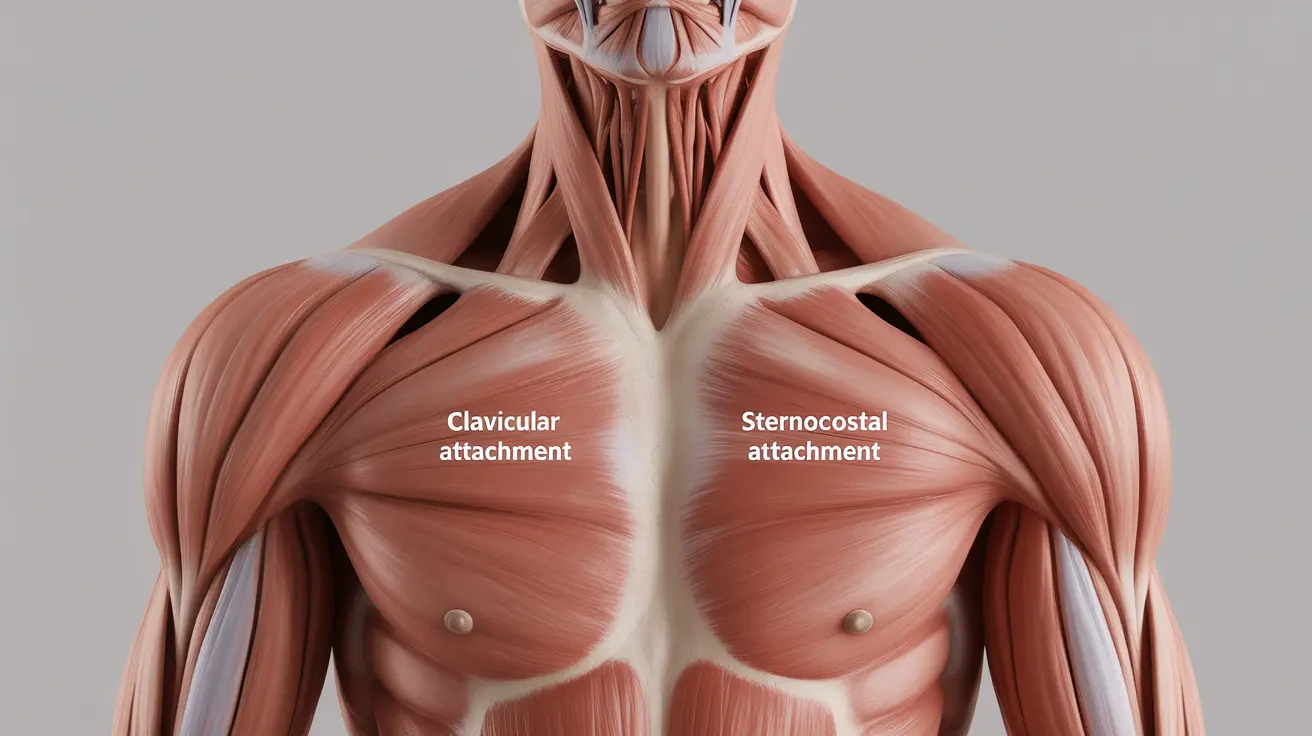A chest gap, characterized by a visible separation between the pectoral muscles, is a common anatomical feature that many people notice when looking in the mirror. While some individuals may feel concerned about this appearance, it's important to understand that chest gaps can be influenced by various factors, including genetics, bone structure, and muscle development patterns.
This comprehensive guide explores the science behind chest gaps, their relationship with genetics, and what you can realistically expect from exercise and other interventions. We'll also discuss when a chest gap might indicate an underlying medical condition that requires attention.
The Role of Genetics in Chest Muscle Development
Genetic factors play a significant role in determining the shape, size, and arrangement of your chest muscles. Your DNA influences several key aspects of chest muscle appearance:
- Muscle fiber distribution
- Muscle insertion points
- Overall muscle shape
- Natural muscle symmetry
These genetic predetermined factors can create variations in how your chest muscles appear, including the presence or absence of a gap between the pectoral muscles. Understanding this genetic component helps explain why chest gaps can persist even with dedicated training.
Anatomical Factors Contributing to Chest Gaps
Bone Structure and Muscle Attachments
The appearance of your chest muscles is heavily influenced by your underlying bone structure, particularly:
- Sternum width and shape
- Clavicle length and position
- Rib cage configuration
- Shoulder joint anatomy
These structural elements create the framework upon which your chest muscles develop and attach, directly affecting the visibility of any gaps between the pectoral muscles.
Muscle Architecture
The pectoralis major muscle has specific attachment points on your chest wall and upper arm. The way these muscles naturally insert into the bone can create varying degrees of separation between the right and left sides, contributing to the appearance of a chest gap.
Exercise and Chest Gap Development
While targeted chest exercises can build muscle mass and improve overall chest appearance, they may not completely eliminate a genetically determined chest gap. However, certain training approaches can help optimize chest development:
- Compound pressing movements
- Isolation exercises
- Various angle training
- Progressive overload techniques
It's essential to maintain realistic expectations about what exercise can achieve while focusing on overall strength and fitness improvements.
Medical Considerations and Chest Asymmetry
In some cases, chest gaps or asymmetry may be related to underlying medical conditions. One such condition is Poland syndrome, a rare congenital condition characterized by underdevelopment of chest muscles on one side. If you notice significant asymmetry or have concerns, consulting with a healthcare provider is recommended.
Frequently Asked Questions
What causes a visible gap between the pectoral muscles, often called a chest gap?
A chest gap is primarily caused by a combination of genetic factors, bone structure, and muscle insertion points. The way your pectoral muscles naturally attach to your sternum and upper arm bones can create this visible separation between the right and left chest muscles.
How do genetics affect chest muscle shape and the presence of a chest gap?
Genetics determine your muscle fiber distribution, insertion points, and overall muscle architecture. These inherited traits influence how your chest muscles develop and appear, including whether you have a natural gap between your pectoral muscles.
Can targeted workouts or exercises eliminate or reduce a chest gap caused by genetics?
While targeted chest exercises can improve overall muscle development and appearance, they cannot completely eliminate a genetically determined chest gap. Exercise can enhance muscle size and definition but cannot change fundamental anatomical structure or muscle insertion points.
Are chest asymmetry and chest gaps signs of underlying medical conditions like Poland syndrome?
While most chest gaps are normal anatomical variations, significant asymmetry or underdevelopment might indicate conditions like Poland syndrome. If you notice unusual asymmetry or have concerns, it's important to consult with a healthcare provider for proper evaluation.
How do bone structure and clavicle length influence the appearance of the chest and muscle gaps?
Bone structure, including clavicle length and sternum width, creates the framework for chest muscle attachment. These structural elements directly affect how your chest muscles align and appear, contributing to the presence or absence of visible gaps between the pectoral muscles.




